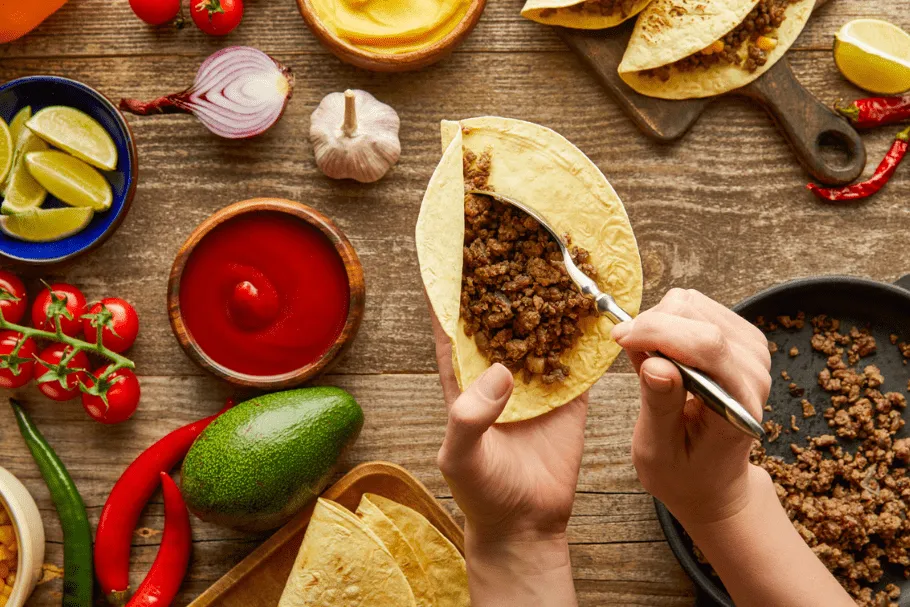Mexico, the jewel of Latin America, is not only famed for its sprawling beaches and ancient landmarks but also as a culinary paradise brimming with diversity. From the coasts to the dense rainforests, Mexico offers countless unique gastronomic experiences. However, few realize that the true culinary heart of Mexico lies in its mountainous regions, where age-old traditions and native ingredients blend together to create unforgettable flavor symphonies. Join “Travel Around the World” on a journey through Mexico’s mountain cuisine, where every dish tells a story of history, culture, and the people who call this land home.
Mexico has long been recognized as a country with a rich and diverse culinary tradition, deeply influenced by its history, culture, and geography. The fusion between native Mesoamerican cooking traditions, European influences, and other global culinary elements has created a vibrant tapestry of Mexican cuisine. In 2010, UNESCO acknowledged its cultural significance by inscribing Mexican cuisine onto the Intangible Cultural Heritage list.
Historical Roots of Mountain Cuisine in Mexico
Mexican cuisine, particularly the mountain variety, is a testament to the nation’s deep cultural heritage. Its foundations were laid by the ancient civilizations such as the Olmec, Maya, and Aztec, who domesticated maize, invented the process of nixtamalization (treating corn with lime), and developed pioneering cooking techniques.
Maize is a staple ingredient, with tortillas served at almost every meal, alongside black beans and chocolate being common elements.
The Spanish conquest in the 16th century introduced new ingredients, including livestock meat, dairy, rice, sugar, and olive oil. This cultural intersection led to the creation of dishes that exhibit the influences of both civilizations. Moreover, influences from Asia and Africa, brought via the slave trade, further enriched Mexican gastronomy.
Distinct Ingredients of Mountain Cuisine in Mexico
Mountain cuisine in Mexico stands out through its emphasis on the use of fresh, native ingredients. Maize, chili peppers, pumpkins, avocados, cacao, and vanilla are indispensable staples. Additionally, locals incorporate unique edible plants like flowers, huauzontle (a wild vegetable), and papaloquelite (an aromatic herb).

Mexican cuisine is renowned for its complexity, with techniques and skills refined over thousands of years.
Chili peppers play a significant role as a defining spice that imbues Mexican dishes with their characteristic heat. From sweet bell peppers to fiery habaneros, these chilies add depth to the flavor palette. Cacao, another native ingredient, remains vital in both dishes and beverages, especially traditional hot chocolate.
Exploring Culinary Diversity Across Mountain Regions
The geographical and historical distinctiveness of Mexican mountain regions has given rise to unique culinary characteristics in each area.
Oaxaca: The Kingdom of Mole Sauces
Located in southern Mexico, Oaxaca is famously known as the “kingdom of mole sauces.” Mole is a complex sauce made with a variety of chilies, spices, fruits, and even chocolate. Each type of mole boasts its own distinct flavor profile, ranging from spicy to sweet, from rich to refreshing.
Mole sauces are a culinary highlight in Oaxaca.
Notable mole varieties include mole negro (black mole), mole rojo (red mole), mole amarillo (yellow mole), and mole verde (green mole). Typically paired with chicken, pork, or enchiladas, mole is a cornerstone of Oaxacan cuisine.
Chiapas: Flavors of the Mountain Forests
Chiapas, located in southern Mexico, exhibits strong Maya cultural influences in its cuisine. Maize is a dietary staple, and dishes often blend beef, pork, and chicken with fresh vegetables like pumpkins, chayote squash, and carrots.
A signature dish of Chiapas is sopa de chipilín, a soup made with chipilín leaves (an aromatic wild herb), maize, and chicken. The region is also renowned for its fiery chilies and flavorful coffee.
Puebla: Tradition Meets Innovation
Situated in central Mexico, Puebla is the birthplace of the iconic dish chiles en nogada. This dish features poblano peppers (a mild chili variety) stuffed with minced meat, fruits, and nuts, topped with creamy walnut sauce and garnished with pomegranate seeds and parsley.
Street tacos are an iconic representation of Mexican street food.
The dish’s vibrant colors symbolize the Mexican flag (green, white, and red). Puebla also boasts a reputation for traditional candies like camotes (sweet potato candy) and borrachitos (liquor-infused candies).
Must-Try Dishes of Mexico’s Mountain Cuisine
- Tamales: Dating back to the Aztec, Mayan, and Incan periods, tamales are made from corn dough stuffed with sweet or savory fillings, wrapped in banana leaves or corn husks, then steamed to perfection.
- Pozole: This traditional soup is made from hominy corn, meat, and spices, typically served with shredded cabbage, chopped onions, radish, and lime.
- Enchiladas: Tortillas stuffed with meat, cheese, or vegetables, covered in sauce, and baked. Enchiladas can be prepared with various sauces, from spicy red to tangy green.
- Tlayudas: A popular street food from Oaxaca, tlayudas are large tortillas that are grilled until crisp, then topped with refried beans, meat, cheese, cabbage, and salsa.
Tips for Experiencing Mountain Cuisine in Mexico
To make the most of your journey through Mexico’s mountain cuisine, keep the following tips in mind:
- Learn about local culinary traditions: Research the signature dishes of each region, native ingredients, and cooking techniques before you go.
- Try street food: Street food is an essential part of Mexican culinary culture. Sample tacos, quesadillas, tlayudas, and elotes (grilled corn) from local vendors.
- Visit traditional markets: Markets are perfect for sourcing fresh ingredients and immersing yourself in the vibrant local atmosphere.
- Take cooking classes: For a deeper dive into Mexican cuisine, consider joining a cooking class to learn how to prepare traditional dishes.
- Drink bottled water: Tap water in Mexico is generally unsuitable for drinking, so stick to bottled or boiled water during your travels.
Conclusion
A culinary exploration of Mexico’s mountain cuisine is a delightful experience for food enthusiasts and culture lovers alike. From age-old recipes crafted with local ingredients to the unique flavors of different regions, mountain cuisine in Mexico offers something to captivate every traveler. Embark on this flavorful journey and discover all that Mexico’s mountain gastronomy has to offer!